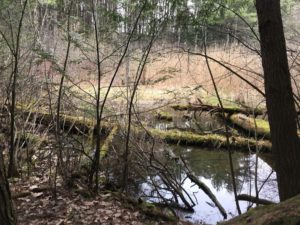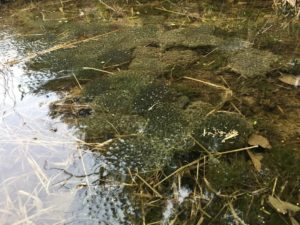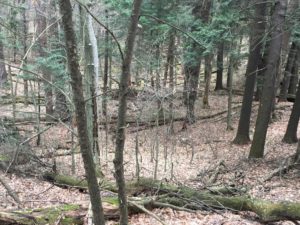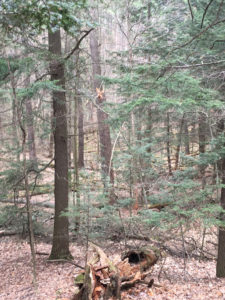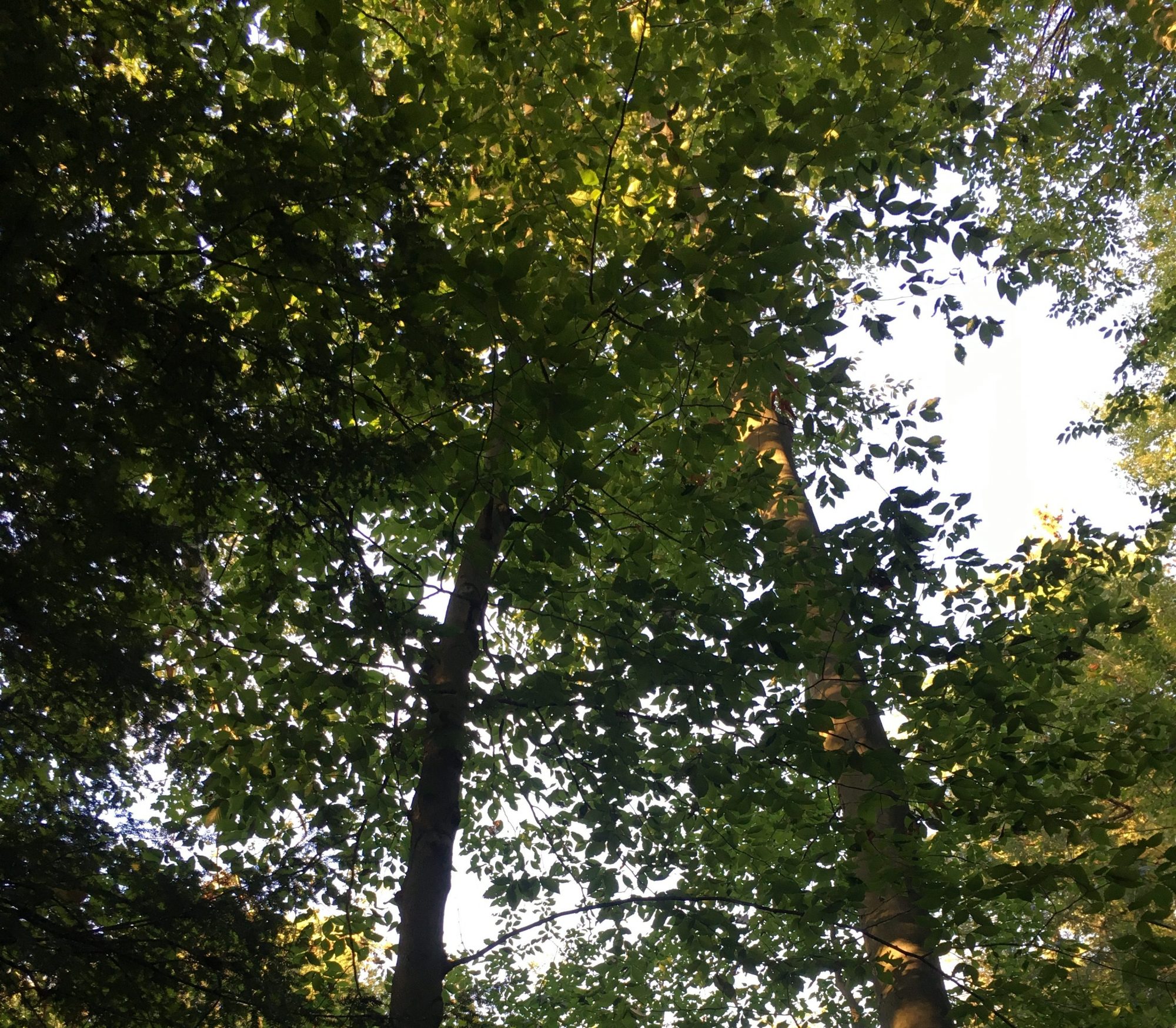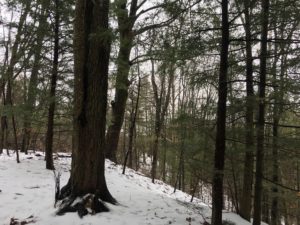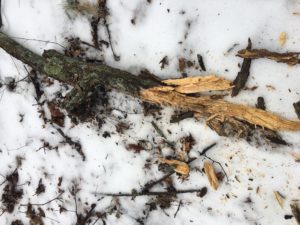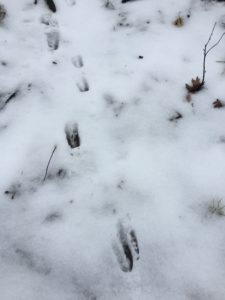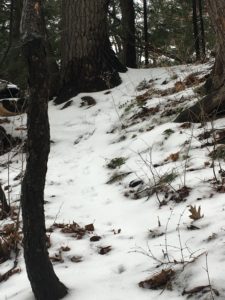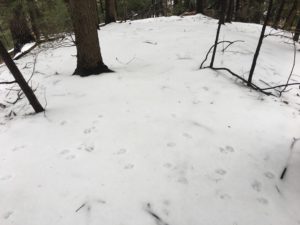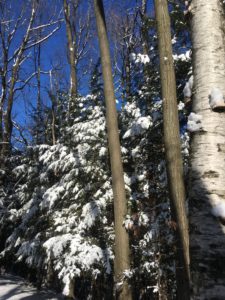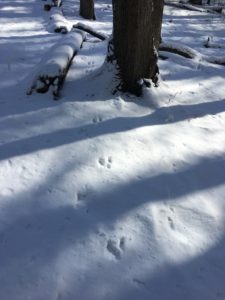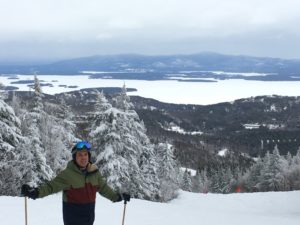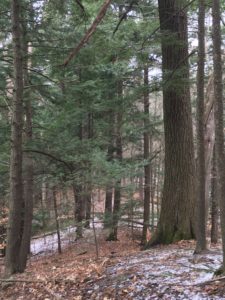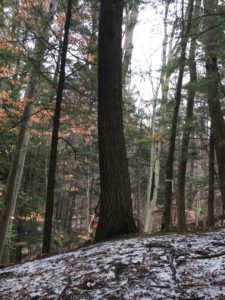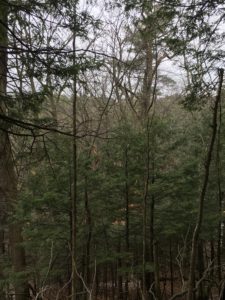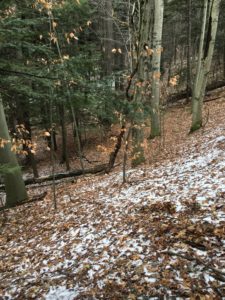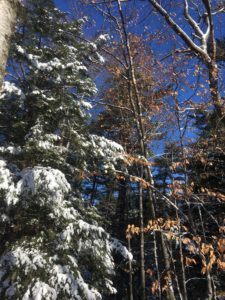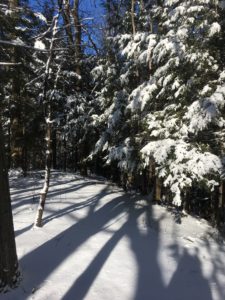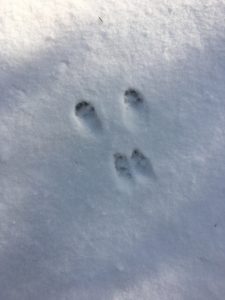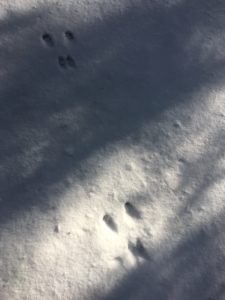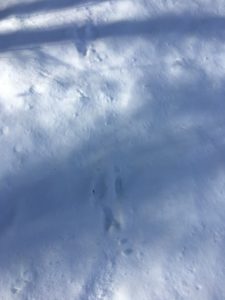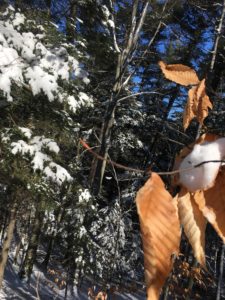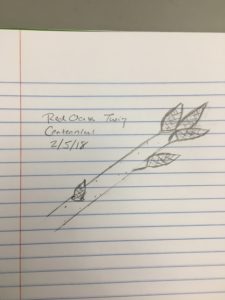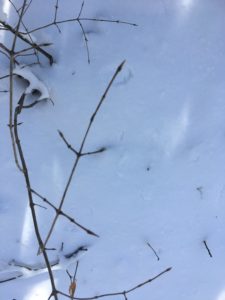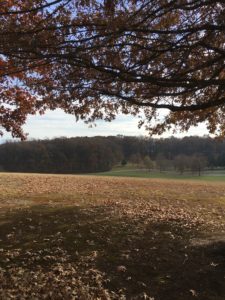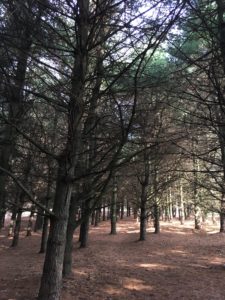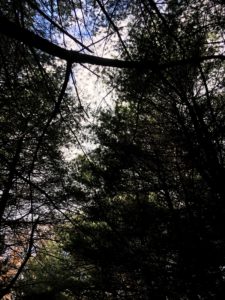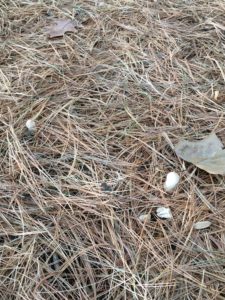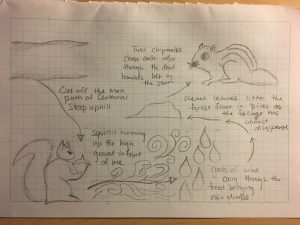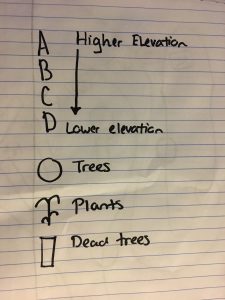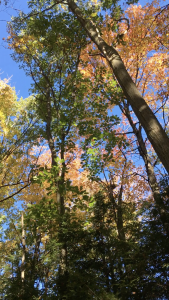Now that it has been warm for a while, Centennial Woods seems a little bit brighter and more lively. Squirrels and chipmunks are hopping around, there seems to be more birds here now than all semester, and beautiful green moss has covered the longs and trees in the area. There does seem to be more fallen trees in the woods, probably due to storms. It’s nice to visit Centennial Woods again before finals week, because I do feel like a part of my phenology spot now. Throughout the months, I have seen Centennial in all its stages. I feel as though I know the land and that I am just wandering around with the animals, not one destructing or causing any irruption to life in Centennial.
At my final visit for the semester at centennial, I saw an owl flying around the woods. I couldn’t get a really good picture because it blends in with the trees and the surrounding woods so well. I also went to a vernal pool with a friend in a different part of the forest. It was a much longer trip to Centennial than usual, as we were spent a lot of time looking around for pools, but when I ended up alone at my spot, I think I was in a really good mindset to think about the place.
Nature and culture intertwine at Centennial because there is a lot of human interaction at these woods throughout time. These have been deforested, replanted, and protected. In the past, humans used the land for agricultural and timber reasons. Now we tend to use the land more recreationally. There are hiking trails throughout, and visiters to Centennial tend to take care of and appreciate the nature.

